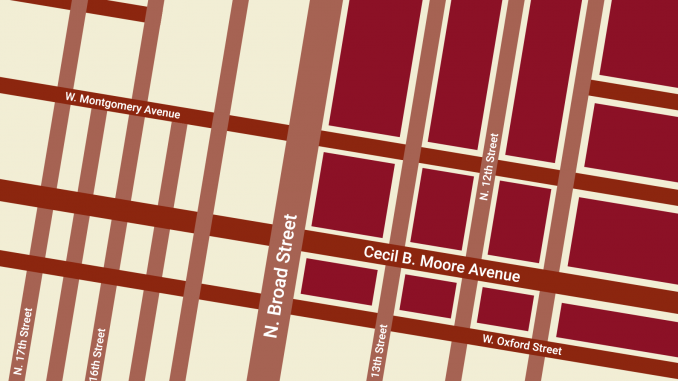
The first question people ask me about attending Temple University isn’t about my major, but if I feel safe on and off campus. I try to explain that there is crime, like any city, and students are safe when they’re aware of their surroundings.
Temple’s Main Campus has a reputation for being unsafe, even though other nearby schools are located in areas with high crime rates.
Temple students must take responsibility for dismantling the stigma surrounding crime in North Philadelphia by listening to and having informed conversations with each other about the area’s history and how it became known as violent.
Temple students contribute the most to negative perceptions of the North Philadelphia community through exaggerating stories of the crime they’ve seen or experienced, said Bradley Gardener, a geography and urban studies professor.
“It gives students and people there a little chip on their shoulder, especially if you’ve experienced being robbed,” Gardener said.
As of Sept. 12, there have been 2,420 violent offenses in the 22nd police district this year, which encompases Temple’s Main Campus, according to the Philadelphia District Attorney’s Office.
There also have been 1,589 shooting victims in Philadelphia, 178 of the shooting victims occured in the 22nd police district in 2021 so far, according to the Office of the City Controller.
North Philadelphia faces neighborhood stigma, said Max Andrucki, a geography and urban education professor.
Neighborhood stigma explains that residents living in areas known for high crime, poverty, disorderly conduct and racial isolation embody negative characteristics attributed to their communities, according to a 2015 study from Proceedings of the National Academy of Sciences. Community members often experience mistrust and suspicion in interactions with outsiders.
The average poverty rate of the four ZIP codes encompassing Main Campus—19121, 19122, 19132 and 19133 — is 41.3 percent, nearly two times higher than the 23.3 percent poverty rate for Philadelphia as a whole, according to data from the United States Census.
In 2019, life expectancy for men in the Poplar-Temple area was 69.4 years, while life expectancy for men in Center City East was 82 years, according to a 2019 report from the Philadelphia Department of Public Health.
Decades of discrimination against North Philadelphia affected 22-year-old community organzier Tyler Ray throughout his childhood, he said.
“When I was in school I used to lie to my friends and say ‘Oh yeah I live on Shelton Ave.’ just because I did not want to say I lived in North Philadelphia,” Ray said.
Ray’s views of North Philadelphia changed when he listened to conversations about the community’s history, he said.
North Philadelphia has a strong history of redlining, it’s important for students to learn about this as it’s a key component to North Philadelphia’s violence today, Ray said.
In 1937, Philadelphia’s Homeowners’ Loan Corporation refused to provide loans in neighborhoods with large populations of Black Americans, immigrants and Jewish people,including the neighborhood encompassing what is now Temple’s Main Campus, because they viewed these areas as financial risks, according to the Office of the City Controller.
“I’m not going to sit here and say North Philadelphia isn’t violent,” Ray said. “It is violent, but it’s important to know why it is.”
Philadelphia remains one of the most racially segregated cities in the nation because areas redlined in 1937 have limited access to educational opportunities and high rates of gun violence, according to the Office of the City Controller.
Most views regarding North Philadelphia do not always reflect the realities of neighborhoods, but instead come from long-standing beliefs against urban areas, Andrucki said.
Between the 1940s and 1960s, populations of suburbs surrounding Philadelphia grew while white populations inside the city fell due to white flight, which occurs when white people move out of urban areas with significant minority populations and into suburban areas, according to Temple University Libraries.
When white flight occurred, perceptions of urban areas changed, they were labeled as lower class and crime ridden, according to Lumen Learning.
Students can help rebrand the perception of North Philadelphia by discussing the community’s history with peers. Through conversations, students gain insight into North Philadelphia’s history, which helps counter inaccurate and unfair representations of the neighborhood.


Be the first to comment